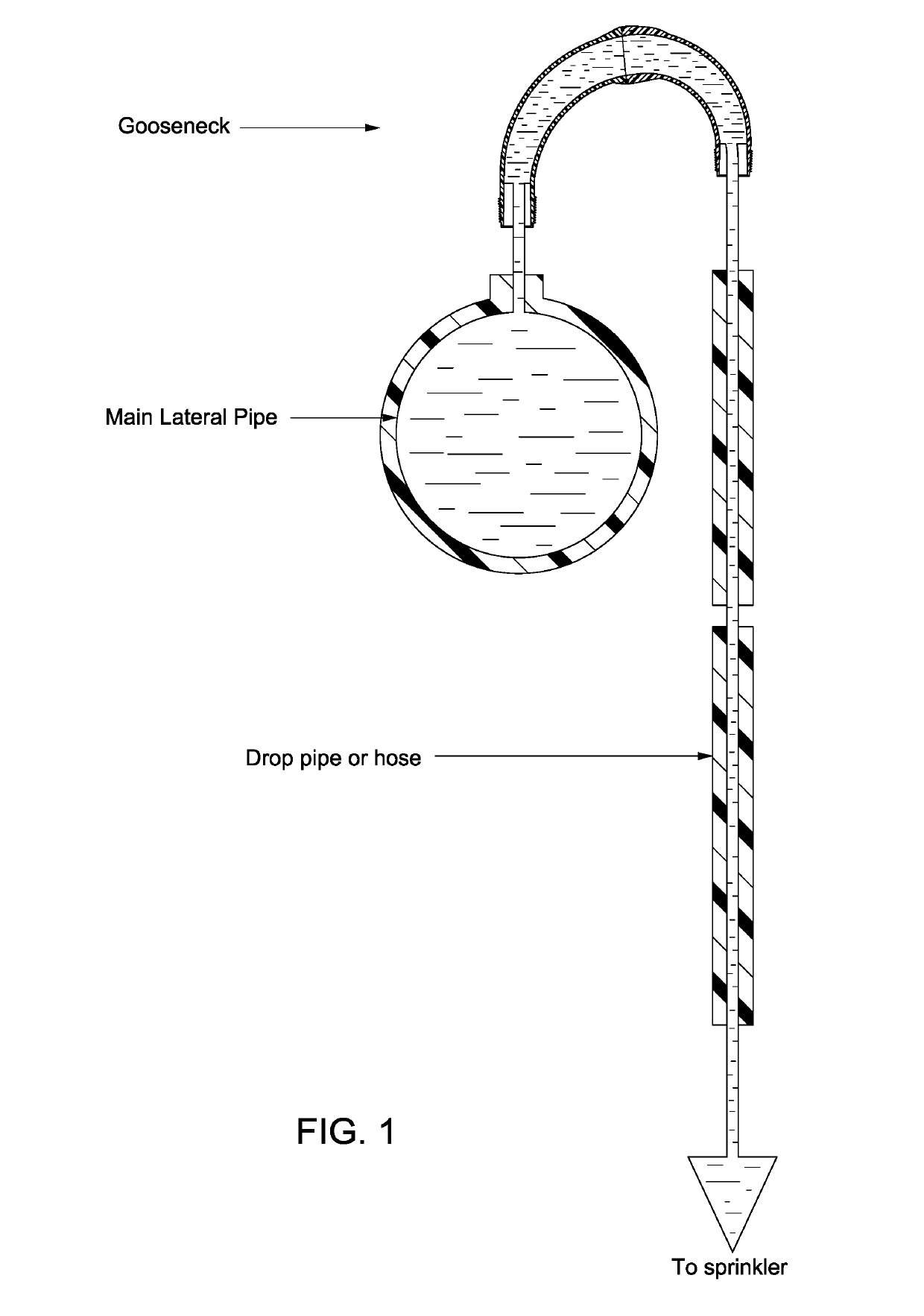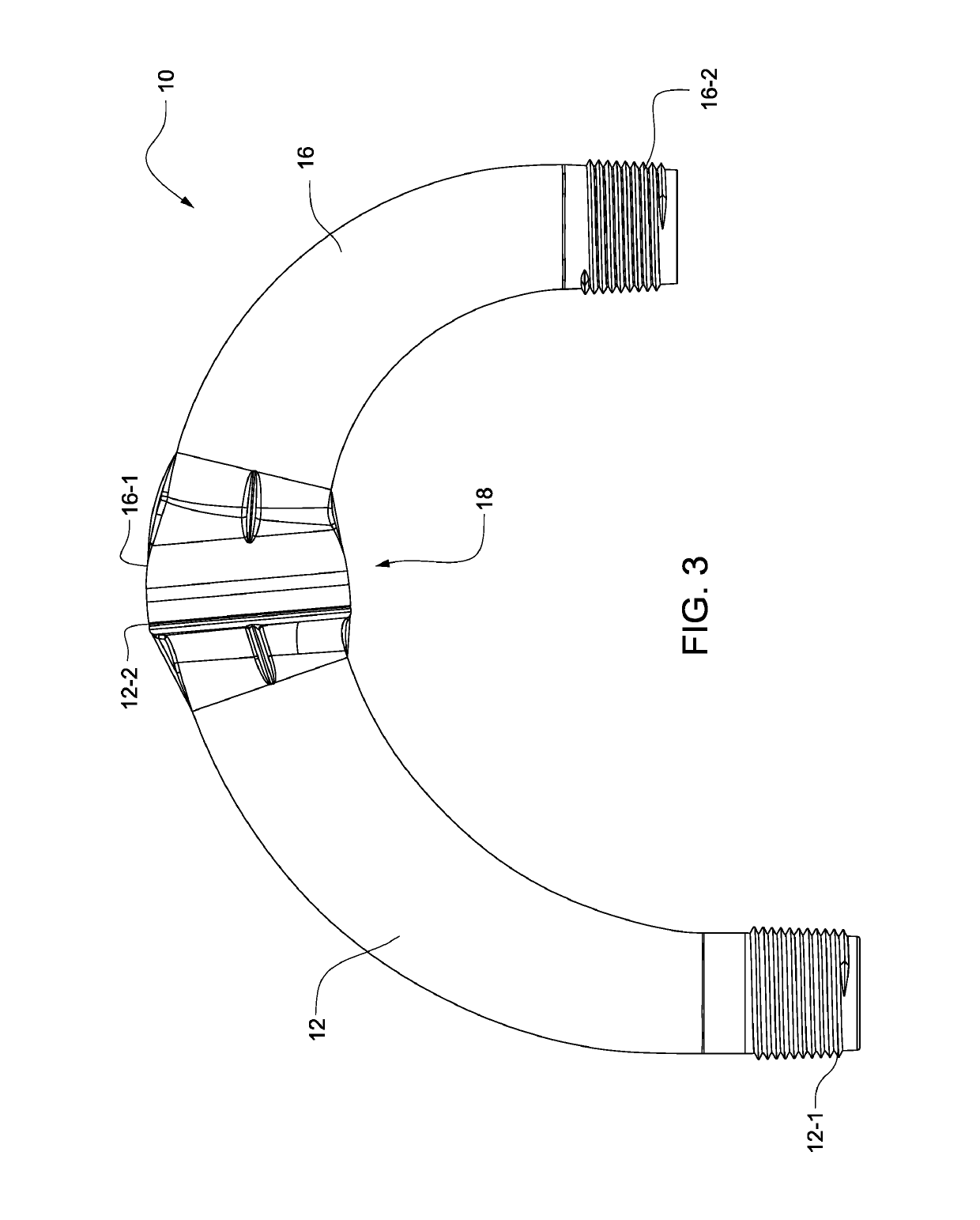Center pivot irrigation gooseneck with varying cross-sectional diameters
- Summary
- Abstract
- Description
- Claims
- Application Information
AI Technical Summary
Benefits of technology
Problems solved by technology
Method used
Image
Examples
Embodiment Construction
[0029]FIGS. 3-7 show a gooseneck pipe of a first exemplary embodiment. The gooseneck pipe 10 includes a first pipe half 12 having a first radiused centerline curve 14 (FIG. 4). A second pipe half 16 is fixed to the first pipe half via a spin weld or friction weld joint 18 or the like. References to the first pipe “half” and the second pipe “half” are not meant to be limited to equal halves of the gooseneck pipe, but rather are intended merely to reference separate portions of the gooseneck pipe. The second pipe half 16 includes a second radiused centerline curve 20 that is different from the first radiused centerline curve 14. As shown, the first radiused centerline curve 14 is tangent to the second radiused centerline curve 20. The first pipe half 12 may be an inlet pipe half, and the second pipe half 16 may be an outlet pipe half. The first radiused centerline curve 14 may be larger than the second radiused centerline curve 20. The first 12 and second 16 pipe halves define a flow ...
PUM
| Property | Measurement | Unit |
|---|---|---|
| Pressure | aaaaa | aaaaa |
| Angle | aaaaa | aaaaa |
| Flow rate | aaaaa | aaaaa |
Abstract
Description
Claims
Application Information
 Login to View More
Login to View More - R&D
- Intellectual Property
- Life Sciences
- Materials
- Tech Scout
- Unparalleled Data Quality
- Higher Quality Content
- 60% Fewer Hallucinations
Browse by: Latest US Patents, China's latest patents, Technical Efficacy Thesaurus, Application Domain, Technology Topic, Popular Technical Reports.
© 2025 PatSnap. All rights reserved.Legal|Privacy policy|Modern Slavery Act Transparency Statement|Sitemap|About US| Contact US: help@patsnap.com



